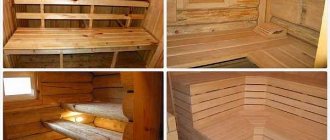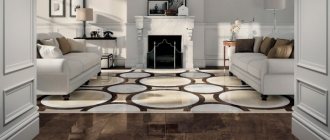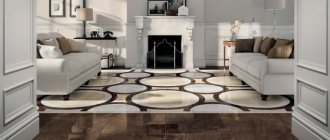Appliances may be the most important aspect since the main function of a kitchen is food preparation. Chefs and bakers who plan to use restaurant-quality features on professional models can justify the hefty price tags. So, seriously think about how much of your budget you want to spend on appliances.
When it comes to small appliances, you should strive to continue to prioritize the functionality of your kitchen. Particularly with small appliances, it is very easy to waste space. The space used for a high-quality built-in coffee maker or wine storage may well be worth it, but these types of appliances are certainly not for everyone.
Ideally, you should first choose your kitchen layout and then choose your appliances.
What household appliances should I equip my kitchen with? Choosing kitchen appliances
Hob . Gas, electric or induction? The choice is personal, although you don't often hear about people switching from gas to electric. When choosing a cooktop for performance, consider efficiency: How much heat are you losing from burner to pan? With gas you lose about 40 percent.
On the other hand, with induction heating—a flat cooktop similar to an electric one that operates like fast-heating gas stoves—you waste the least amount of heat. Induction is not mainstream, but now it is returning to the Russian market. Induction is definitely a time saver because you can bring a pot of water to a boil faster.
When shopping for gas cooktops, ask about variable control, which means how long you can maintain a “simmer” without the flame escaping. Look for burner grates made of cast iron or metal that conducts heat for better transfer from burner to pan.
Stoves and ovens . A high-efficiency convection oven that circulates heat with a fan to cook food faster and more evenly will help you get dinner on the table faster than a traditional oven.
Hood. A serious hob requires a ventilation system that will accompany the exhaust from the kitchen silently. If you hear the sound of suction (not the engine running), that's good. If noise bothers you, consider units that can be installed with external motors. External and built-in hoods provide high-performance ventilation.
Fridge. When evaluating refrigerator performance, quality comes down to the compressor. A two-compressor unit is more expensive, but will allow you to store fresh food longer. It may be worth it if you spend a lot on groceries. The ideal (and most expensive) situation is completely separate refrigeration and freezer units. Choose more refrigerator space if you buy more fresh food, more freezer space if you like to keep things cold.
It is always better to choose a model with a high energy efficiency rating. While energy efficiency is important for all appliances, and your refrigerator will be on all the time, an inefficient refrigerator can cost you a fortune.
Microwaves. Microwaves can take up a lot of space no matter where you place them. So if you want your microwave to perform better, consider a convection microwave, which also works as a high-speed oven, eliminating the need to purchase a double oven.
Dishwasher . You can now buy pull-out dishwashers that are easier to load and can be installed at different heights depending on your needs. They can handle smaller loads, so they are more efficient.
However, traditional dishwashers with doors are the most popular style, and they can be paneled to match kitchen units. Stainless steel continues to reign supreme in popularity. Depending on your kitchen layout, you may want to add an economical dishwasher with a bar to manage your glassware.
As with any major appliance, be sure to choose a dishwasher with excellent energy efficiency ratings and be wary of machines that use more water than necessary. The best models may have a higher price tag, but they are almost always worth it.
Kitchen sink. Don't skimp on the sink if you've splurged on a great countertop. If the sink has to be replaced prematurely due to a breakage, for example, the entire countertop may have to be lifted - an expensive and messy job.
Built-in dishwasher
Today you won’t surprise anyone with a dishwasher - almost every kitchen has one.
A dishwasher is not so much a mandatory item as an auxiliary household appliance in the kitchen. However, recently dishwashers have been purchased more and more often, as they can make the housewife’s work easier. Built-in models can have different overall dimensions, capacity and number of programs. Most built-in dishwashers are equipped with the following basic washing programs:
- Preliminary;
- Standard;
- Fast cycle;
- Half load mode.
In the vast majority of built-in dishwashers, dishes are dried by condensation. That is, after already clean dishes are doused with hot water, moisture from the dishes condenses onto the inner walls of the unit. In terms of energy efficiency, most models belong to class “A” - the most economical in energy consumption. The machines have a low noise level during operation and are equipped with an audible warning system.
Some nuances when installing a built-in dishwasher
Even when purchasing this device, you need to pay special attention to the design of the base part of the machine. In some models, the decorative facade may conflict with the base. This modification is installed in the lower module housing without any problems. It is necessary to make a cut in the base part of the furniture body, and this entails a violation of the aesthetic qualities of the kitchen set.
When installing a built-in dishwasher, you must ensure that there is no connection point for utilities behind its rear wall. Otherwise, the machine simply will not fit in the closet.
We also recommend that you watch a video on how to install a dishwasher yourself:
You can learn more about the installation process of a built-in dishwasher from this article.
What else is important to know when choosing household appliances for the kitchen?
- When choosing a convection oven, keep in mind that electric convection ovens tend to operate more efficiently.
- Want to hide your refrigerator? Check out the models that can be covered with panels to make this appliance match your interior.
- The size of the sink matters. A deeper sink is more convenient for washing dishes.
You'd be surprised how many people order appliances that won't fit in their allotted space—as long as their new refrigerator, washing machine, or whatever doesn't end up stuck in the foyer ceiling. Appliance retailers are full of stories about savvy customers who fail to notice that the only way to get into the kitchen is to climb a steep staircase, walk through a narrow doorway, or walk down a hallway that turns sharply before ending up at a dead end too small for its purpose. goals. Therefore, measure everything carefully before purchasing so as not to make a mistake.
The decision about what appliances to buy should be made at the kitchen design stage and, of course, before purchasing furniture. Both freestanding and built-in appliances have their pros and cons to consider.
Wide range of kitchen appliances
Modern manufacturers of kitchen furniture, as well as companies producing built-in appliances, supply the market with products that are perfectly combined with each other. For example, Miele hobs fit perfectly into kitchens from any manufacturer. The Miele company produces gas, electric and induction hobs, varying in functionality and dimensions. The choice is wide enough to choose a model that fully matches the overall design of the kitchen. For example, the Miele KM 6346 induction hob will look great in a high-tech interior. In particular, this panel will fit well into a Rational Cambia or Rational Clou kitchen. When giving preference to induction-type cookers, do not forget that you should purchase appropriate cookware for such equipment. A good choice could be PRO TITAN induction cookware from the Pro Induction line, made exclusively from environmentally friendly and healthy materials, which is especially important for cooking.
Which is better: built-in or free-standing household appliances?
Freestanding Appliances
Stand-alone devices are generally less expensive than their built-in counterparts, and the ability to be positioned in any way is their biggest advantage. On the other hand, such equipment does not always fit well with the entire kitchen.
Built-in household appliances
These are devices installed in furniture, in some cases (refrigerator, dishwasher) completely covered with facades. Such furniture looks aesthetically pleasing and consistent. It is also easier to clean and safer for children. Unfortunately, embedded equipment is often more expensive and less capable than freestanding units of similar sizes.
What should you remember when buying household appliances for the kitchen?
- There are no proven and reliable companies - a higher price does not guarantee uninterrupted operation. Before purchasing, read the opinions of other users.
- Only those functions that you will use - the more functions a given equipment model has, the higher its price. However, it may turn out that many functions that seem useful at first glance will never be used by you. Why overpay?
- Warranty period – When choosing home appliances, it is recommended to choose a model with a longer warranty period due to additional features that you do not need. You can also use the option to extend the warranty offered by the store. However, you must first study the rules of such a service in detail (usually it is just insurance).
- Appropriate characteristics of the hood – the efficiency of the hood should be greater, the larger the surface of your kitchen. It is worth choosing a more powerful model, especially if our kitchen is open to the living room.
- The size of the dishwasher corresponds to the number of family members. For one person or couple, a 45 cm dishwasher size is sufficient. If you have more people in your home, you may want to consider purchasing the 60cm model.
- Compare energy consumption - before purchasing, it is useful to compare the energy efficiency classes of individual models and calculate whether buying a more expensive, but more economical device will pay you back or not.
Many people wonder if they purchase a device from a lower price range whether they will get a good and hassle-free product. However, you must remember that nowadays household appliances are usually “stacked” from the same parts. Large and small companies use the same suppliers of heaters, glass, units or other components, providing only a finished device with their logo.
Therefore, due to the failure rate of devices from almost all manufacturers, it is worth choosing models with the longest warranty period. It should also be remembered that the more functions a given device has, the more elements can fail.
Rules for purchasing household appliances - expert recommendations
1. There are no verified companies - a higher price does not guarantee proper operation of the equipment. Before purchasing, you should read reviews from other users . You may find that you can buy a very good device at a lower price.
2. Only the features you need – Too often, customers are fascinated by a long list of extra features that they will never use. And the more there are, the higher the price of the device itself. It is also worth remembering that the more additional, often redundant functions, the higher the likelihood of equipment failure. With a large or even unlimited budget, you don't have to save money - you can buy the best devices with extra features without thinking about using them.
3. Warranty – It is better to buy devices with a longer warranty than with additional features. You can also take advantage of the extended warranty offered by the store, but you should read the rules before using the promotion.
4. You should buy household appliances after ordering furniture. Consider the size of the cabinets in which the equipment will be located, or the amount of space that will remain between pieces of furniture. It often turns out that after assembling furniture, the gaps left for household appliances do not correspond to the calculations made on paper. Therefore, the optimal and most effective sequence of actions is as follows:
- kitchen Design,
- Furniture assembly,
- purchasing household appliances taking into account the dimensions of the furniture.
5. You need to select devices in accordance with the needs of the household, i.e. If you have a large family, you should think about buying a spacious refrigerator and dishwasher that can accommodate the dishes of all household members. It is worth considering, even if the equipment must be of non-standard dimensions.
Placement of household appliances
A well-equipped kitchen is an ergonomic room that takes care of comfort of use. Each household member has their own preferences, but following a few tips can make using household appliances and other equipment much easier:
1. The refrigerator, stove (hotplate) and sink should form a triangle. The optimal distances between these devices should be:
- refrigerator - sink: from 120 to 210 cm
- sink – stove – from 120 to 210 cm
- stove - refrigerator: from 120 to 270 cm
Of course, the distances must be adapted to the size of the kitchen.
2. The oven (if it is built-in) should be placed at an optimal height for an adult - so that there is no need to bend over for baked dishes.
3. Having an induction hob and a built-in oven, you should not place them in the same column. Large amounts of heat from the oven while turning on the induction hob may damage the hob.
4. The refrigerator should be as close to the door as possible.
Placing appliances in the kitchen
Properly placed kitchen appliances can make life much easier for anyone. To begin with, it is recommended to sketch out a kitchen plan, where household appliances should be depicted.
- It is worth remembering the rule of the work triangle, the corners of which are the sink, stove and refrigerator.
- There should be no obstacles in the way of movement between these elements.
- Multifunctional equipment will help to significantly save space.
Any arrangement of household appliances in the kitchen involves the installation of built-in and conventional mobile appliances, which can be rearranged as desired.
It is not recommended to share the work surface with either a stove or a refrigerator. All small household appliances are placed in corners or placed on shelves. To save even more space, the microwave oven can be placed on a hanging shelf at a convenient height.
It should be remembered that there should be a small distance on the sides of the stove and oven. The most convenient place should be the sink, since much more time is spent here. The dishwasher should be located as close to the sink as possible, and it should be easy to load and unload.
Is it worth buying a set of household appliances for the kitchen?
A set of household appliances may consist of an oven and an induction hob, as well as several appliances. Most often this is built-in technology. The kit may include the following kitchen appliances:
- oven,
- hob (induction, ceramic, gas, etc.),
- microwave,
- washing machine,
- fridge,
- hood
The advantage of this solution is the purchase of all devices made in the same style, and therefore visually matching. However, most people prefer to assemble household appliances themselves due to:
- the ability to find a cheaper model with the necessary functions and parameters,
- Buy only the necessary equipment.
Very often, manufacturers produce a line of devices that have a similar appearance, but differ in parameters. Although independently assembling household appliances that match the furniture and the entire kitchen may take more time than buying a ready-made set, this primarily saves money.
Small household appliances for the kitchen
Small kitchen appliances that you should consider purchasing include:
- coffee machine,
- food processor,
- kettle,
- waffle iron,
- bread machine and much more.
While these are often devices that are tucked away in cabinets, some very often sit on a countertop or are also built into a cabinet (like a coffee maker). Therefore, it is worth adjusting their appearance to other household appliances in the kitchen.
White kitchen appliances
White color visually enlarges the room. However, furniture does not necessarily have to resemble modern, often futuristic interiors. Very often there are designs that refer to the style of a bygone era. For white furniture/walls/floors, you can buy white appliances that will blend in with the interior.
However, it should be remembered that white household appliances should be washed quite often. Another solution is to add variety to the room by adding appliances in a different color that breaks up the whiteness. There are many possibilities, and each of them allows you to achieve a different visual effect.
How to choose the right kitchen appliances for a modern interior
Traditional Kitchen by Stewart Thomas Design-Build
Modern kitchen appliances require a significant investment, so it is important to purchase them carefully. You may have a heartfelt affection for a solid stainless steel set, but be prepared to pay equally hefty prices.
Set a budget in advance and then research what shapes, sizes, styles and functions will work in your kitchen. The following tips for choosing kitchen appliances will help you figure it out.
Combined stoves (hob + oven)
This classic oven and cooktop combination suits most kitchens in both style and functionality. Determine your budget, available space and style in advance.
This will help you make a choice: a standard integrated, free-standing cooking module; stainless steel, vintage cast or other gas stove design. Use the guide on how to create the right design for your kitchen.
Modern kitchen by Eck | MacNeely Architects Inc.
Freestanding ovens
If you decided against the standard row arrangement, you will need to find a separate hob and oven for your kitchen.
This can be very convenient for amateur chefs, since this arrangement opens up a number of possibilities in organizing the workspace: double stoves, ovens, steam tables and steamers - all of this will find a potential place in your kitchen. Use the guide on how to choose the right oven location in your kitchen.
Glenvale Kitchens Design Idea
Hobs
Having a separate cooktop allows for greater flexibility in design and cooking. If you like ovens or just want to keep your baked goods and meals separate from each other, then you'll also need to choose an electric or gas cooktop. Find out how to find a cooktop for your kitchen.
Design idea from Fivecat Studio | Architecture
Refrigerators
Refrigerators can take up quite a lot of space. Consider how much space you'll actually need to store your groceries before you start shopping.
You also need to decide what kind of refrigerator you want to buy, depending on the dimensions, so that it fits harmoniously into your stylish kitchen interior: select the depth at the same level as the countertop or buy a standard one if you have a built-in model. Use the guide on choosing the right refrigerator.
Design idea Innovative Construction Inc.
Microwave
Once you've created your dream kitchen, make sure every piece in it looks right and appropriate, including the microwave. While it's not the most glamorous of gadgets, it's a necessity for most of us.
Some people love built-in models, while others are content with freestanding countertop options. Check out our tips to find out which look is right for you. Check out our guide on choosing the right microwave oven.
Design Idea Tracey Stephens Interior Design Inc.
Universal technology
When choosing technology, it is important to take into account the different mobility and use needs of people of different ages. Elderly family members, small children and others with limited mobility should feel comfortable in your kitchen.
This means that it is necessary to adapt the choice of at least some of the devices so that everyone can use them independently and they are safe for everyone. Check out this guide on how to choose kitchen appliances for a versatile design.
Design idea Camber Construction
Eco-friendly technology
There are so many kitchen appliances today that come with some kind of eco-friendly guarantee in the form of a label stuck on the front door of the appliance. But which parameters actually have an impact on the environment and your energy bill?
Paying close attention to the capacity and power of a new appliance before purchasing it can save you money in the long run.
Thank you for your help in compiling a brief overview of choosing Vanessa Brunner kitchen appliances.











